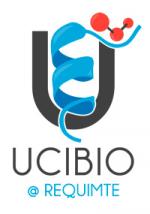Gold-nanobeacons for gene therapy: Evaluation of genotoxicity, cell toxicity and proteome profiling analysis
- Citation:
- Gold-nanobeacons for gene therapy: Evaluation of genotoxicity, cell toxicity and proteome profiling analysis, Conde, João, Larguinho Miguel, Cordeiro Ana, Raposo {Luís R. }, Costa {Pedro M. }, Santos Susana, Diniz {Mário S. }, Fernandes {Alexandra R. }, and Baptista {Pedro V. } , Nanotoxicology, aug, Volume 8, Number 5, p.521–532, (2014)
Abstract:
Antisense therapy is a powerful tool for post-transcriptional gene silencing suitable for down-regulating target genes associated to disease. Gold nanoparticles have been described as effective intracellular delivery vehicles for antisense oligonucleotides providing increased protection against nucleases and targeting capability via simple surface modification. We constructed an antisense gold-nanobeacon consisting of a stem-looped oligonucleotide double-labelled with 3′-Cy3 and 5′-Thiol-C6 and tested for the effective blocking of gene expression in colorectal cancer cells. Due to the beacon conformation, gene silencing was directly detected as fluorescence increases with hybridisation to target, which can be used to assess the level of silencing. Moreover, this system was extensively evaluated for the genotoxic, cytotoxic and proteomic effects of gold-nanobeacon exposure to cancer cells. The exposure was evaluated by two-dimensional protein electrophoresis followed by mass spectrometry to perform a proteomic profile and 3-(4,5-Dimethylthiazol-2- Yl)-2,5-Diphenyltetrazolium Bromide (MTT) assay, glutathione-S-transferase assay, micronucleus test and comet assay to assess the genotoxicity. This integrated toxicology evaluation showed that the proposed nanotheranostics strategy does not exhibit significant toxicity, which is extremely relevant when translating into in vivo systems.
Notes:
info:eu-repo/grantAgreement/FCT/SFRH/SFRH%2FBD%2F70202%2F2010/PT# info:eu-repo/grantAgreement/FCT/SFRH/SFRH%2FBPD%2F72564%2F2010/PT# info:eu-repo/grantAgreement/FCT/SFRH/SFRH%2FBD%2F64026%2F2009/PT# info:eu-repo/grantAgreement/FCT/3599-PPCDT/127178/PT# info:eu-repo/grantAgreement/FCT/5876-PPCDTI/109877/PT# info:eu-repo/grantAgreement/FCT/3599-PPCDT/112597/PT# PEst-OE/SAU/UI0009/2011 PEst-C/EQB/LA0006/2011 SFRH/BD/62957/2009

